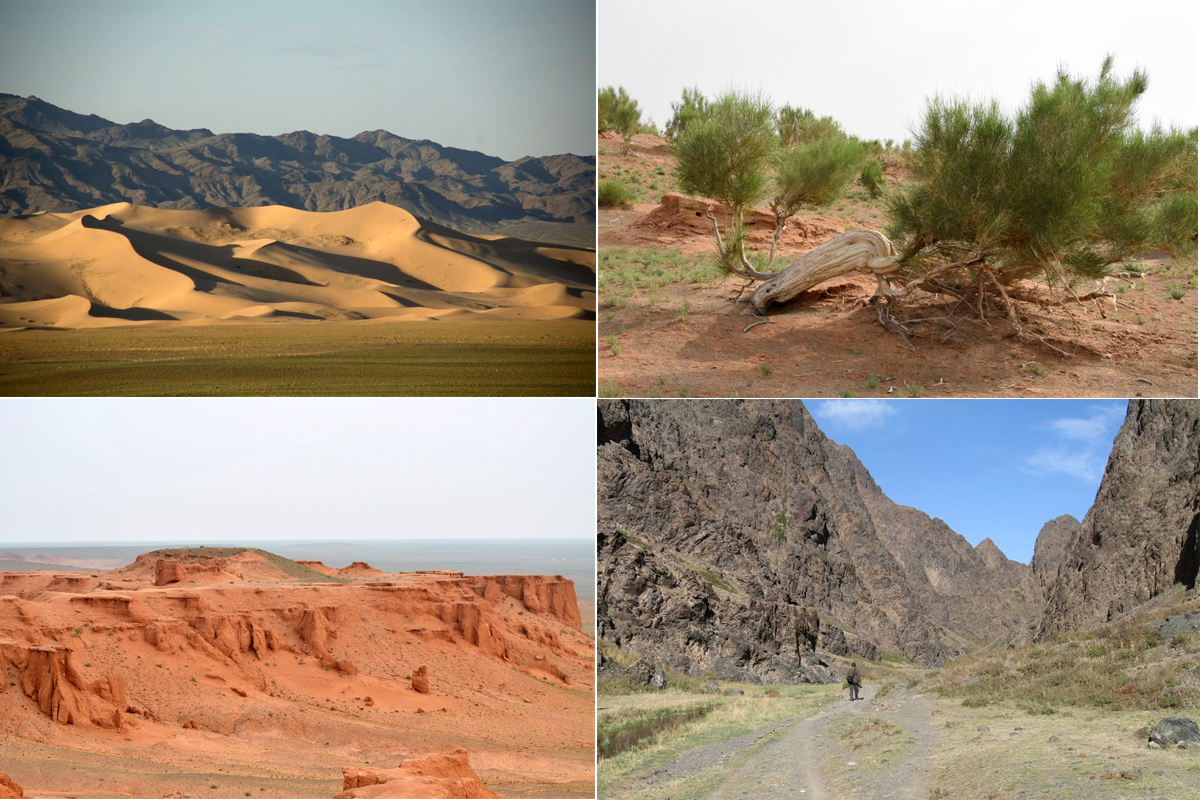Mongolia Gobi is one of the lifetime places
The Gobi desert, one of the world's great deserts, covers much of the southern part of Mongolia. Mongolia Gobi is considered semi-desert, because it is not still an arid desert: mountains, green lands, sand dunes and eternal blue sky make a land paradise here. The climate in the Gobi is extreme. Temperatures reach +40° C. in summer, and -40 in winter. Precipitation averages less than 100 mm per year, while some areas only get rain once every two or three years. Strong winds up to 140 km/h make travel dangerous in spring and fall. Great Gobi National Park is one of the largest World Biospheres, with an area larger than Switzerland. It contains the last remaining wild Bactrian (two-humped) camels, wild ass, and a small population of Gobi bears, the only desert-inhabiting bear. Mongolia Gobi is one of the richest fossil dinosaur sites in the world because of from millions years ago still remain here and in 1920s.

The Mongolian Gobi is a paradise for paleontologists. One of the major attractions has been the accessibility of fossils near the surface in areas like the famous Flaming Cliffs/Bayanzag, where the American paleontologist Roy Chapman Andrews first discovered fossil beds of dinosaur bones and the first ever recorded dinosaur eggs in 1922. Gobi desert is always attracted visitors with its fascinating sights such as particular canyon Yoliin am and Khongor sand dune, well known by “singing dune”. The “singing dune” is given by locals because of the sound produced by masses of sand moving in the wind can be heard from afar.
Related tours:
Orkhon valley and Treasure of the Gobi 10 days tour >>>



Comments